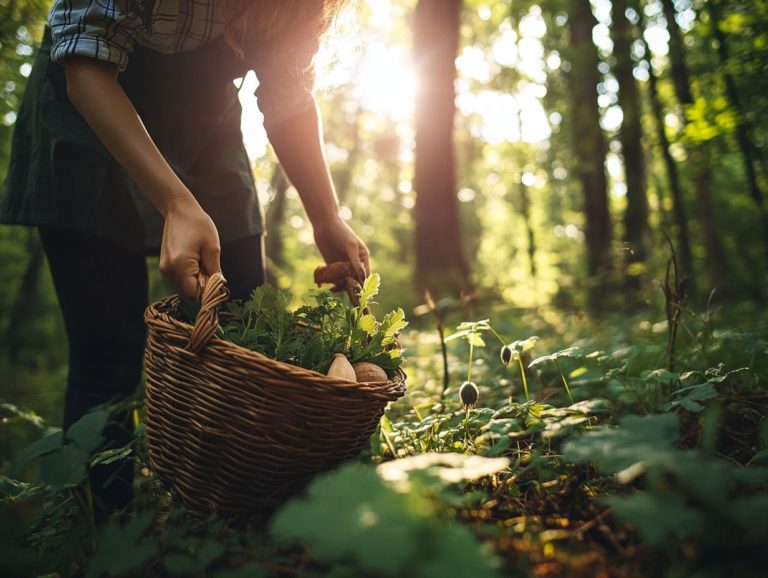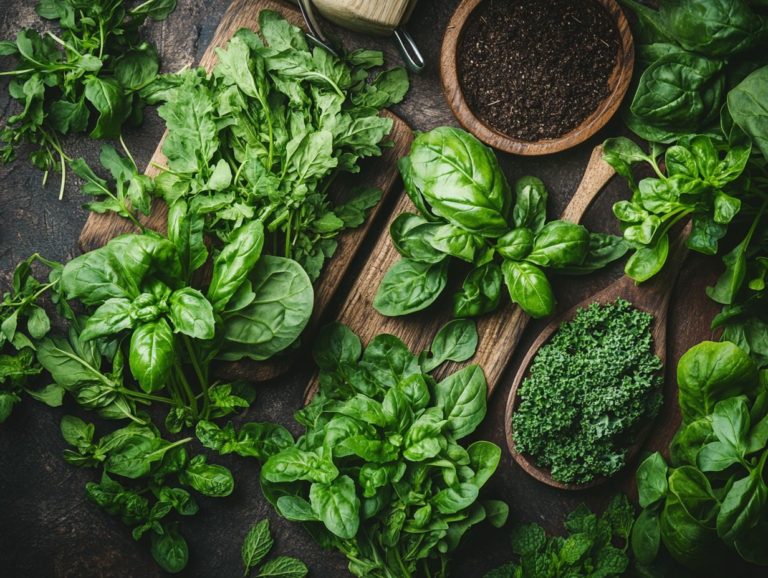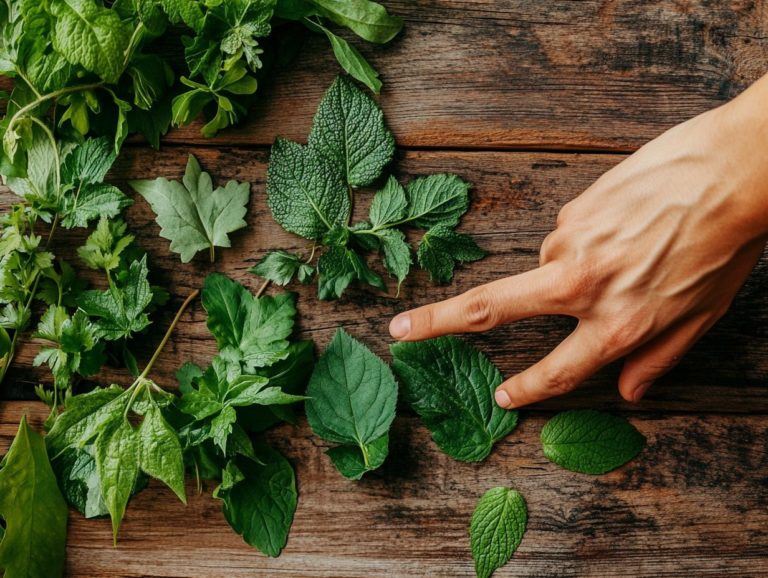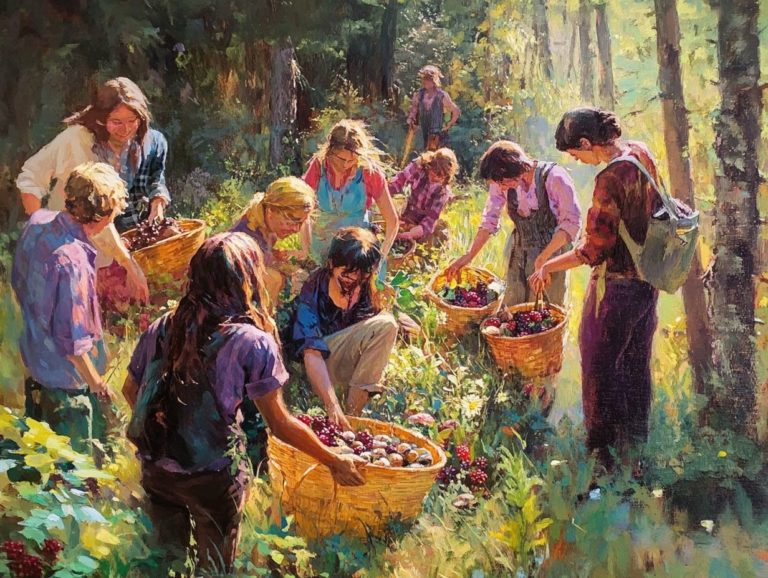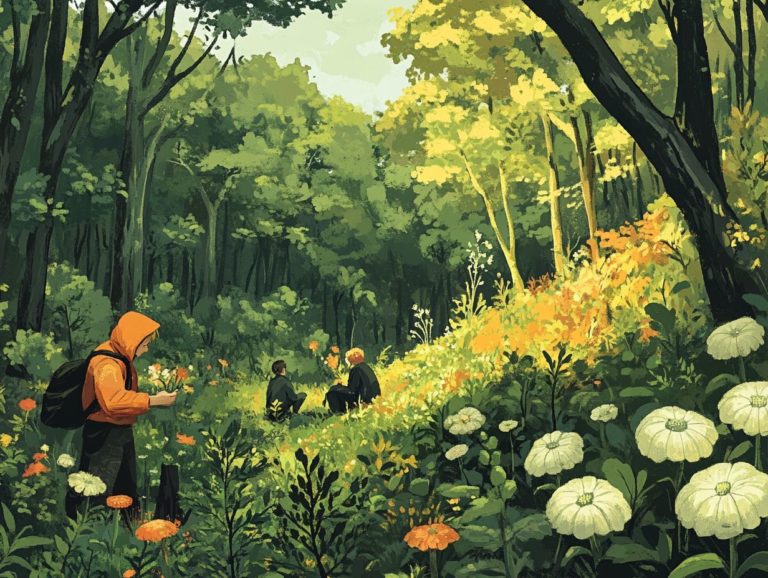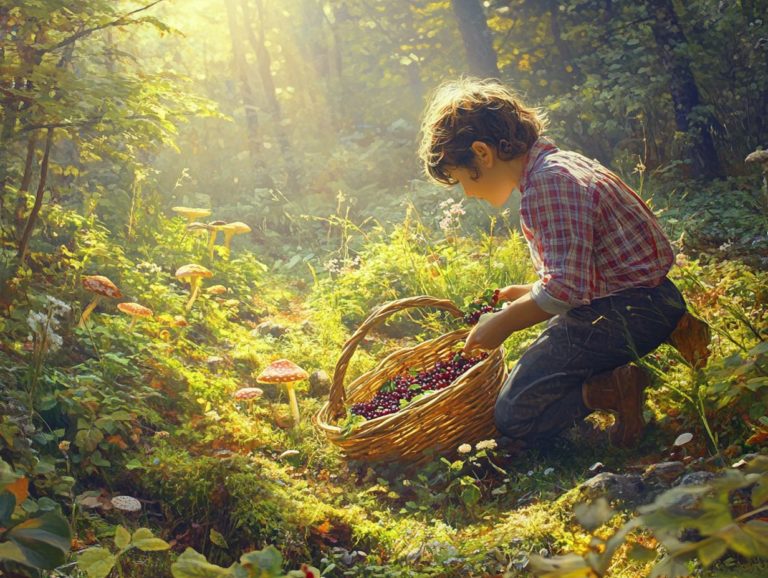What Edibles Can Be Foraged in Wetlands?
Foraging in wetlands presents a remarkable opportunity to connect with nature while uncovering a diverse selection of edible plants and aquatic creatures.
This guide delves into the fascinating realm of wetland foraging. It showcases common edible plants, offers tips for identification and preparation, and highlights various fish and crustaceans you might encounter.
As you savor these natural delights, remain mindful of potential hazards and embrace sustainable practices.
Explore the treasures of wetland foraging and learn how to do it safely and responsibly.
Contents
Key Takeaways:
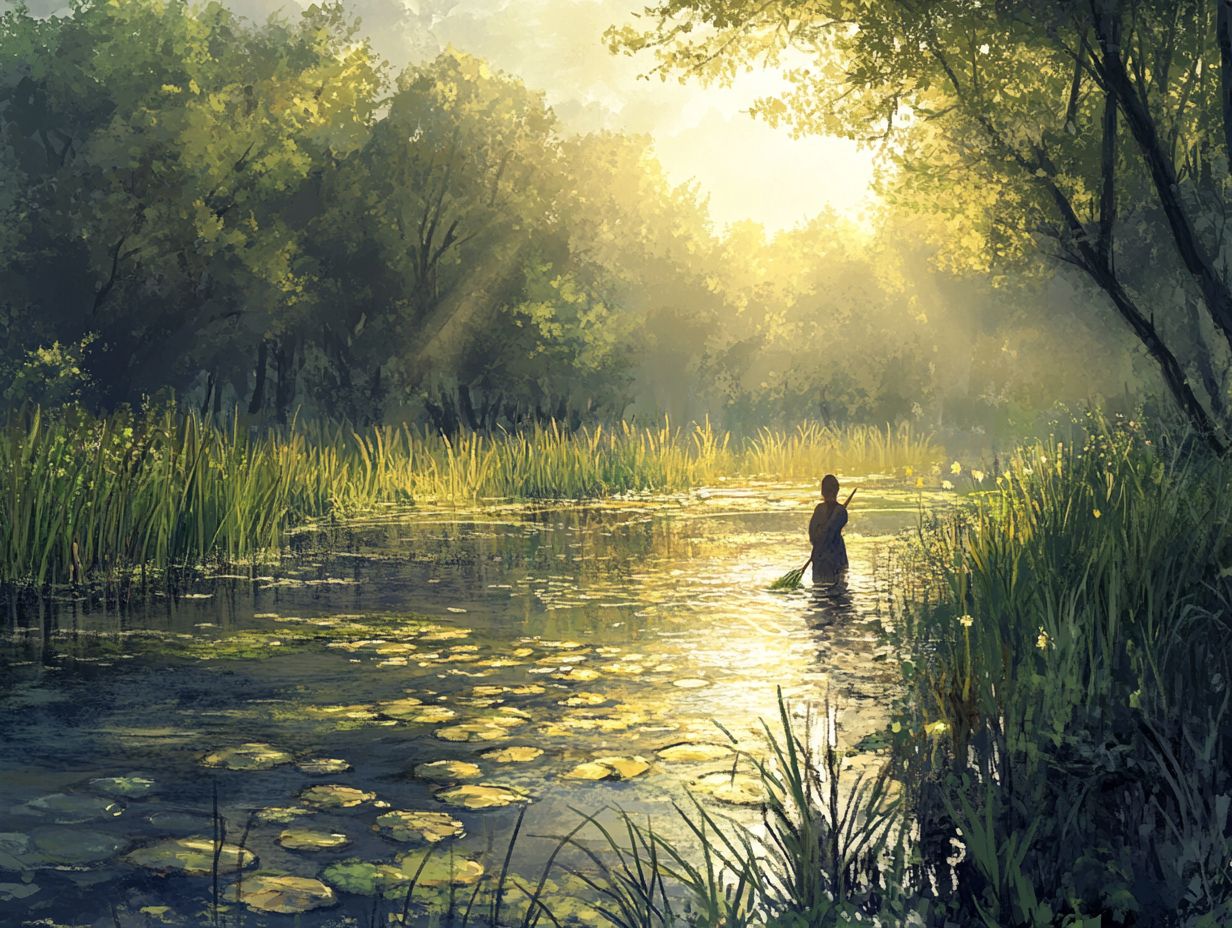
What is Foraging and Why Wetlands?
Foraging is the art of gathering wild foods from nature. When you turn to wetlands, you’re stepping into a treasure trove rich in variety of life. Here, you’ll find various wild edibles like watercress, cattails, and even herbal remedies. In Alabama, foragers such as Tim Pfitzer and Joseph Hosey delve into these ecosystems to unearth native species that are not only delicious but also vital for local diversity and sustainable harvesting practices.
The state’s diverse landscapes, filled with swamps, marshes, and streams, yield an impressive array of wild foods. Chefs are embracing these ingredients, infusing their menus with flavors steeped in history and culture.
By sourcing ingredients directly from local wetlands, culinary practices celebrate the importance of wild foods and champion environmental stewardship.
Notable chefs in Alabama are at the forefront of this movement. They craft dishes that elevate foraged ingredients, enriching the culinary landscape while raising awareness about the ecological significance of these habitats. This blend of foraging and gastronomy promotes a sustainable approach to food that pays homage to the natural world.
Common Edible Plants in Wetlands
In wetlands, you ll discover a diverse selection of edible plants that play a vital role in both biodiversity and culinary traditions. Notable examples like watercress, wild mint, and various edible flowers bring unique flavors to your table. They also serve as essential ingredients in local cuisine, particularly among Southern chefs.
The abundance of culinary herbs and varied plant life in these ecosystems highlights their ecological richness and underscores the significance of foraging for sustainable food sources.
Identification and Preparation Tips
Identifying and preparing wild edible plants and mushrooms is an essential skill for you as a forager, particularly in regions like Alabama, where a rich diversity of species abounds. Whether you re spotting edible mushrooms like chanterelles and oyster mushrooms or recognizing culinary herbs thriving in wetlands, mastering foraging intricacies enhances your safety and elevates your culinary experience.
Pay close attention to key visual characteristics that help you differentiate between safe and toxic plants. For instance, edible wild greens like dandelion and purslane stand out with their unique leaf shapes and vibrant hues. Many edible plants thrive in moist, shady areas, often near water sources.
After gathering your finds, employing appropriate cleaning and cooking techniques like saut ing mushrooms or blanching greens will maximize both flavor and safety. To truly incorporate these ingredients into your meals, consider adding foraged treasures to traditional dishes, such as wild mushroom risotto or a fresh herb salad. This approach adds a delicious twist and elevates the local culinary experience.
Edible Aquatic Animals in Wetlands
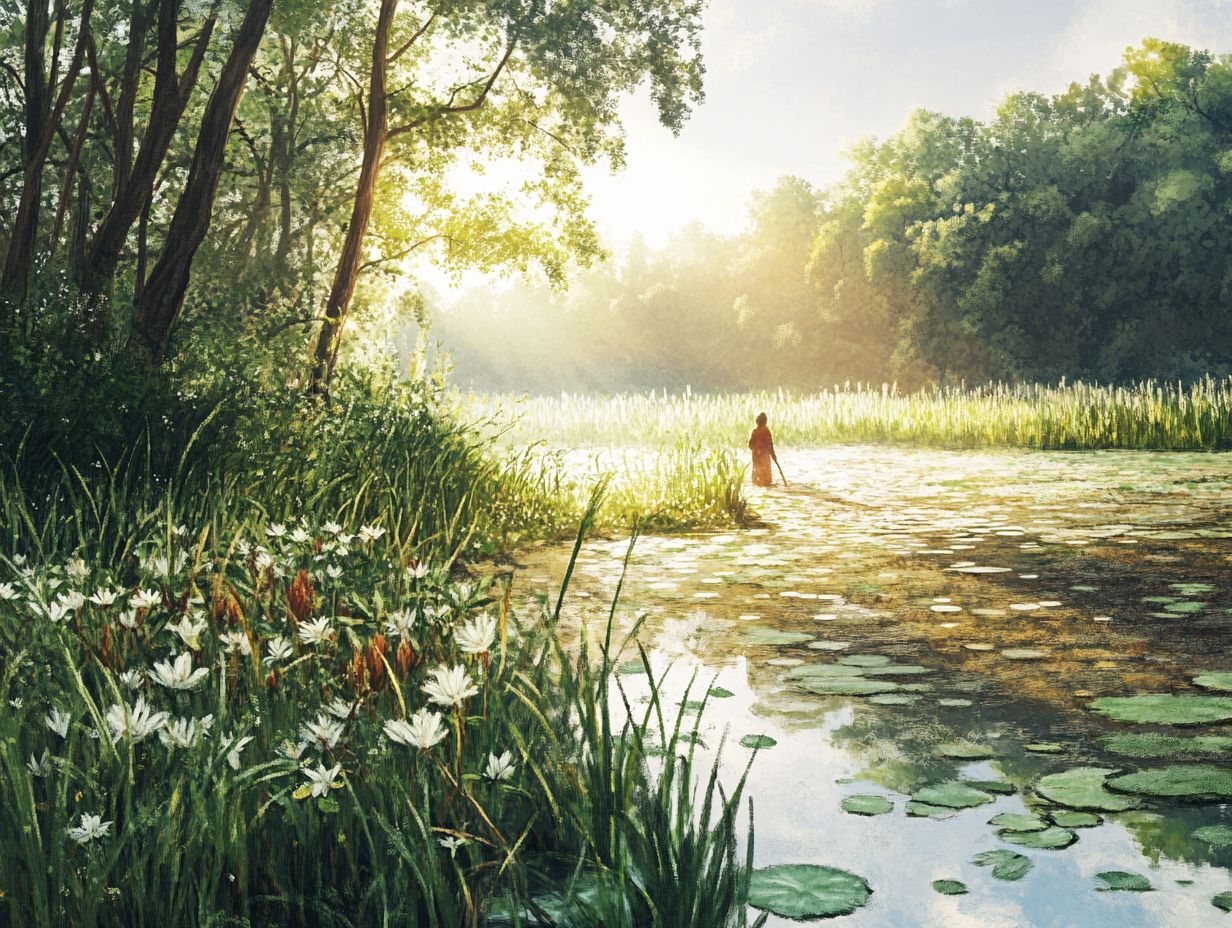
Wetlands are a treasure trove of edible plants and are brimming with a diverse array of aquatic animals that you can forage sustainably. To learn more about specific options, check out what edibles can be found in coastal areas. Species like fish and crustaceans are not just delicious; they play a crucial role in the ecosystem, enriching biodiversity while offering valuable culinary delights.
Familiarizing yourself with the various edible aquatic animals found in these habitats elevates your foraging experience. You will also maintain sustainable harvesting practices that safeguard these essential ecosystems.
Fish, Crustaceans, and Other Edible Creatures
Common edible creatures in Alabama’s wetlands include various fish species and crustaceans, each offering a world of culinary possibilities to explore. Whether you’re a fisherman or a forager, you ll love the flavors of local catches and enhance your meals with seafood sourced directly from nature.
Noteworthy species include catfish, mullet, and redfish, celebrated for their delicate textures and robust flavors. Crustaceans like blue crabs and shrimp bring an unmistakable essence to your dishes, whether you steam, boil, or incorporate them into hearty stews.
If you’re looking to elevate your cooking, consider marinating fish in citrus juices or whipping up a spicy crab boil to unleash the freshest flavors. Emphasizing sustainable foraging practices ensures the longevity of these vital ecosystems while you indulge in Alabama’s rich aquatic bounty. Enjoy the journey of discovery in every bite!
Foraging Safety in Wetlands
Foraging in wetlands can be rewarding, but it s crucial to understand the potential hazards to ensure safe gathering of wild foods. From identifying edible mushrooms to recognizing poisonous plants, a solid grasp of the local flora and fauna is essential to avoid dangerous encounters.
Taking proper precautions, such as foraging with experienced individuals and using reliable field guides, significantly enhances your enjoyment of these rich ecosystems while keeping you safe.
Potential Hazards and Precautions
When foraging for wild foods, being mindful of potential hazards is essential for a safe and enjoyable experience. Being aware of poisonous plants and wildlife threats ensures safety while foraging.
In wetlands, the stakes can be high due to toxic species like water hemlock and certain varieties of wild parsnip, which can lead to serious health issues if consumed by mistake. Wildlife encounters can also bring unexpected dangers; you might inadvertently surprise snakes, alligators, or even aggressive birds defending their nests.
To enhance your foraging safety, arm yourself with a reliable field guide, learn to identify both edible and poisonous plants, and consider venturing out with a seasoned companion. Thoroughly cleaning and cooking any gathered edibles minimizes health risks, while staying vigilant about your surroundings ensures a more enjoyable adventure.
Sustainable Foraging Practices
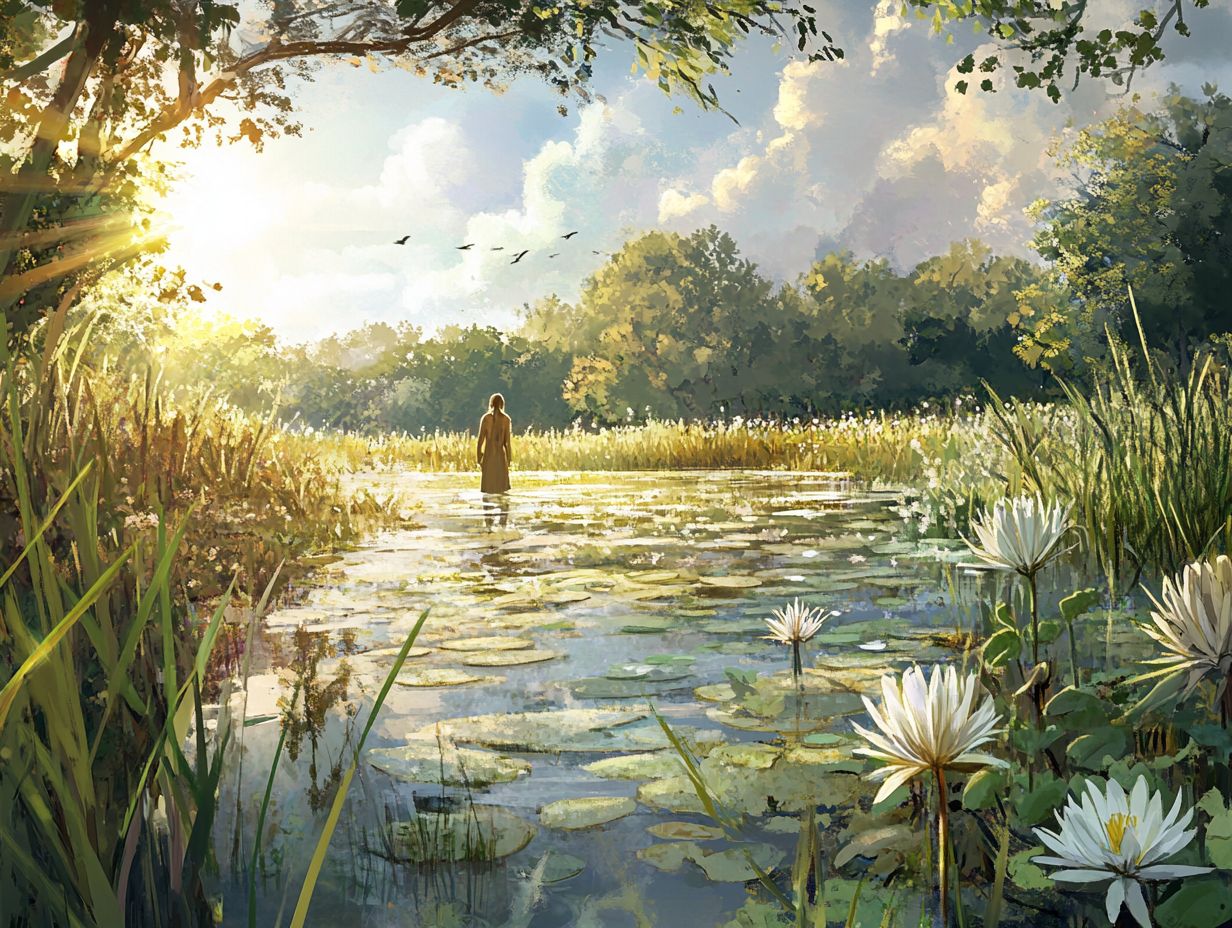
Sustainable foraging practices are crucial for safeguarding the environment while allowing you to savor the treasures of wild edibles. Focusing on responsible harvesting and understanding the impact of foraging on local ecosystems enables you to enhance biodiversity and ensure these resources remain plentiful for future generations.
Embracing responsible practices when gathering wild foods nurtures ecological balance and elevates your foraging experience. Each outing turns into a meaningful connection with nature.
How to forage sustainably:
- Take only what you need.
- Respect local guidelines.
- Avoid overharvesting.
Protecting the Environment and Yourself
Protecting the environment while foraging demands a mindful commitment to sustainability and an awareness of how your actions influence biodiversity, which means the variety of life in a place. By embracing responsible foraging practices like selective harvesting and respecting habitat boundaries you can enjoy wild foods without harming the ecosystems you value.
Caring for the environment makes your foraging better and aligns your enjoyment with caring for nature.
As you start your foraging trips, it s crucial to familiarize yourself with the local flora and fauna to prevent over-harvesting and ensure you re collecting only mature specimens, including wild edibles. Consider leaving some plants behind to promote natural regeneration and biodiversity.
Engaging in these practices protects habitats and deepens your appreciation for nature s intricate web of life, including native species.
Cultivating this connection can ignite a passion for environmental conservation, inspired by Alabama foragers, encouraging others to adopt sustainable foraging practices and celebrate the rich biodiversity in your natural surroundings.
Frequently Asked Questions
What Edibles Can Be Foraged in Wetlands?
Cattails, watercress, wild mint, and wild rice are all edible plants found in wetlands.
Can I Eat Cattails Found in Wetlands?
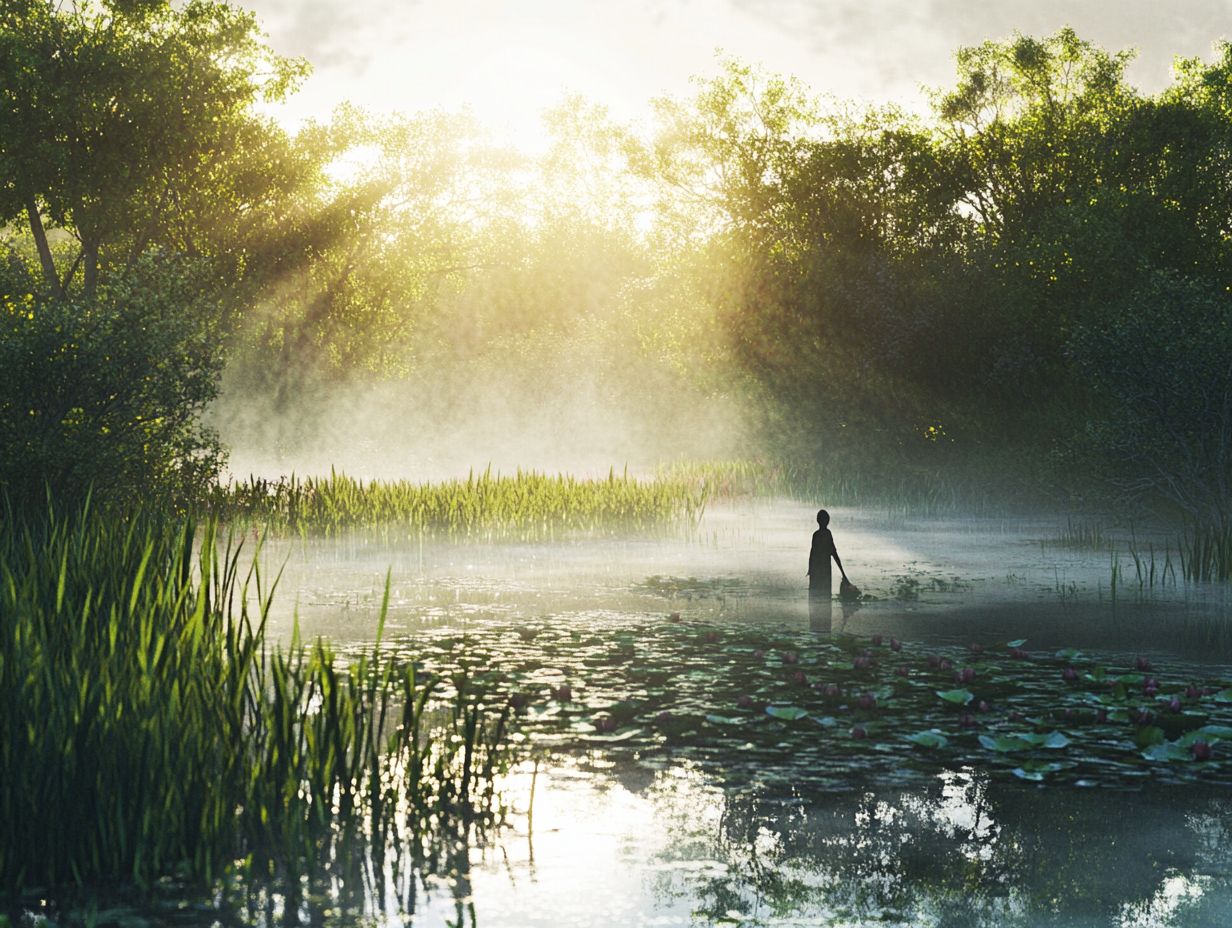
Yes, cattails are a common edible plant found in wetlands. The young shoots and roots can be eaten raw or cooked.
Are There Any Berries That Can Be Foraged in Wetlands?
Yes, there are several types of berries that can be found in wetlands, including bog cranberries, blueberries, and elderberries.
Is It Safe to Eat Wild Rice Found in Wetlands?
Yes, wild rice can be safely foraged in wetlands. It is a nutritious and versatile grain used in various dishes, favored by Southern chefs.
What Precautions Should I Take When Foraging for Edibles in Wetlands?
Be cautious when foraging for wild foods in wetlands. Always ensure you are familiar with the plants you pick, and never eat anything you cannot positively identify.
What Other Types of Edibles Can Be Found in Wetlands?
Apart from plants, a variety of edible animals can be found in wetlands, such as fish, shellfish, and waterfowl.
Get out there and start foraging sustainably!

